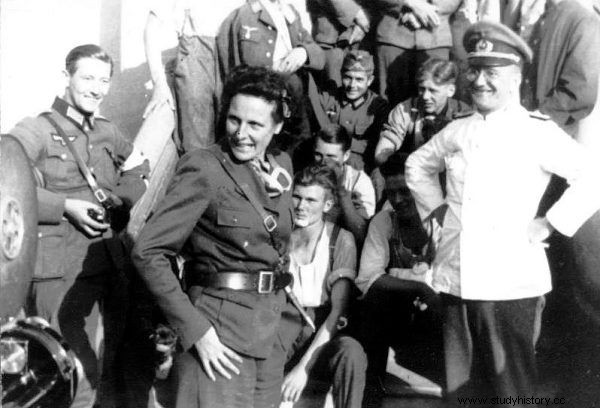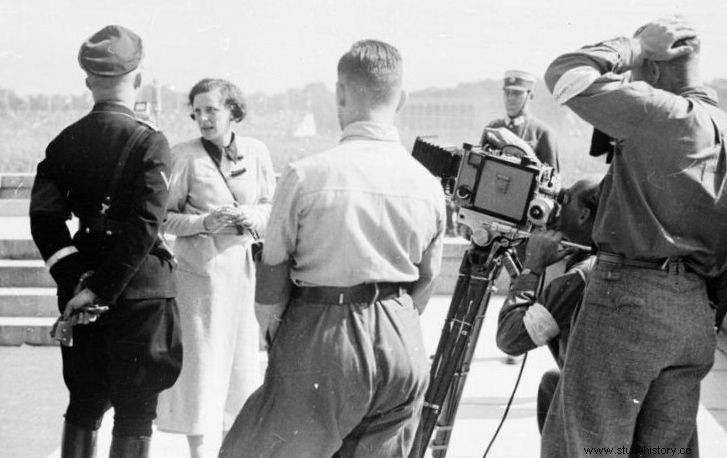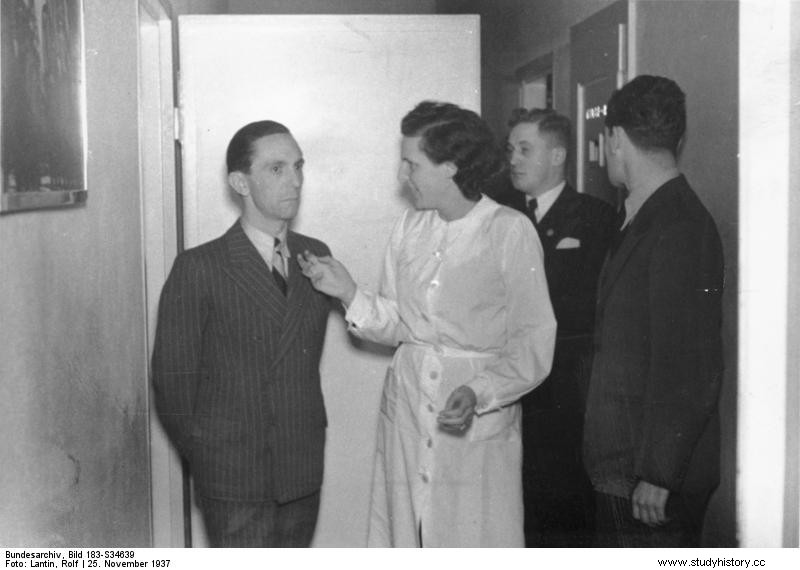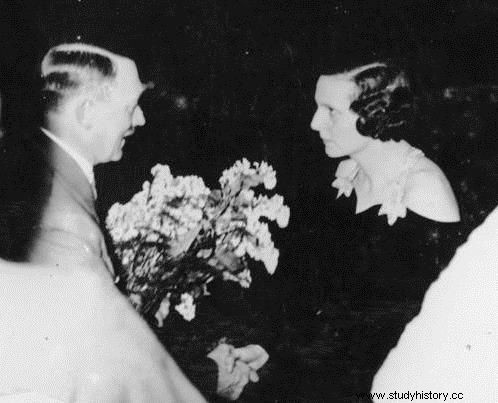Leni Riefenstahl is a controversial figure who brought a novel perspective to a moving image while using it to promote Nazi propaganda. What was her work like and what is the legacy she left behind in the world of film? Did she knowingly support the NSDAP?
The artist's career began innocently - at first she wanted to become a dancer. Its recognizable, original style has been recognized by the whole of Europe thanks to a tour with Max Reinhardt, funded by the Jewish producer Harry Sokal. Unfortunately, the injury led to knee surgery, putting Leni's career into question.

Nazi criminals financed her artistic activity in the Third Reich.
During one of her visits to the doctor, the dancer came across a poster for the film Berg des Schicksals (Mountain of Destiny) from 1924, filmed by Arnold Franck. It was then, as she admitted in an interview in 2002, that she wanted to become involved in film art.
From zero to hero
Leni began to actively observe the world of film. She managed to meet Luis Trenker, an actor from the film Berg des Schicksals, and later, courtesy of a friend, also Arnold Franck himself. The director was one of the creators of the then popular genre called mountain film. Leni Riefenstahl was lucky - she managed to get Franck to let her play in her next production, Der Heilige Berg (Holy Mountain).
Riefenstahl's acting must have turned out to be suitable for Franck's films, as he later shot more films with her, including Die weiße Hölle vom Piz Palü (Piz Palü's White Hell) from 1929, which brought her international fame. Soon, in 1932, she made her first film:Das Blaue Licht (Blue Light). She received the Silver Medal for the painting at the Venice Festival, but critics received it rather negatively. Riefenstahl blamed them for their lack of objectivity as many of them were Jews.

Leni Riefenstahl with Heinrich Himmler in Nuremberg
The film tells the story of a girl from the countryside, hated by the local community. The villagers believe that she has been possessed by the devil and are driving her out. The protagonist seeks shelter in a mountain cave. Riefenstahl claimed she received an offer to go to Hollywood after filming Blaue Licht, but turned it down to stay in Germany with her boyfriend. Another reason may have been that the film caught the attention of Hitler, who stated that Leni, who starred, was the epitome of the perfect German woman.
Ideological cinema
The director admitted that she had been enchanted by the figure of Hitler before. In 1932, she had the opportunity to hear one of his speeches, which made a great impression on her. In her diary, she described this event:
I had an almost apocalyptic vision that I never forgot. The surface of the Earth seemed to stretch out in front of me, like a hemisphere suddenly splitting in the center, releasing a huge stream of water, so powerful it touches the sky and shakes the earth.
During the inevitable encounter, Hitler proposed to Leni to direct Das Sieg des Glaubens (Victory of Faith) - an hour-long propaganda film about the 1933 NSDAP convention in Nuremberg. It was quite a surprise for the young director, because the Goebbels Ministry of Propaganda did not inform her about such intentions. She only had a couple of days to prepare, but eventually the report was made.
The film shows Hitler along with Ernst Röhm, who was murdered shortly thereafter on the orders of the Führer during the Night of the Long Knives. Hitler ordered all copies of the film to be destroyed after these events. One was only found in 1990 in Great Britain, so today we have better insight into the development of Leni Riefensthal as a director.

With Joseph Goebbels in 1937
A year later, Riefenstahl made another coverage of the NSDAP convention, this time under the name Triumph des Willens (Triumph of the Will), which is often considered the best propaganda film in the world . As the creator said, at first she did not want to agree to make another picture praising the Nazi party, but Hitler managed to persuade her by promising that it would be the last time. At that time, she was absorbed in a completely different project:Tiefland (Lowlands), an adaptation of the popular Berlin opera by Eugen d'Albert, which achieved its peak popularity in the 1920s. It was during the filming of this film that she was supposed to use the gypsy population from concentration camps. These people were treated very badly on the set, and after the shooting was finished, they were sent back to Auschwitz.
The work in the hands of the people
As she said in the documentary Die Macht der Bilder:Leni Riefenstahl (The Wonderful, Terrible Life of Leni Riefenstahl) from 1993, she never tried to promote Nazism in her films. She was disgusted with what the Triumph des Willens was used for .
Despite this, in 1935 she made another account of the NSDAP meeting. Later, in 1936, Hitler asked her to create a film to promote the Summer Olympics to be held in Berlin. It was then that "Olympia" was created, which critics praised for its remarkable, innovative aesthetics and technical achievements. At one point, a camera was placed on a trolley traveling on tracks to capture the athlete in motion. Slow-motion shots were also used. It was completely new in the cinema of that time, but soon, thanks to the work of Leni Riefenstahl, they became standard. "Thanks to creativity crammed into the strict framework of propaganda and truly artistic innovation reinforcing the ideological message, the work of Leni Riefenstahl transferred Hitler's vision to the screens," we read in the book "Hitler. The Man and the Monster ”by Michael Kerrigan. But did the director have the same opinion?
In the film, we see athletes of all races, including the African-American Jesse Owens. The film was secretly funded by the Third Reich. The whole world welcomed him very eagerly, unable to praise the director's talent.

Adolf Hitler congratulates Leni Riefenstahl. 1934.
After the war, silence
After the end of the war, Leni spent four years in prison in France. She heard charges of exploiting 117 concentration camp prisoners, but was not found guilty as not a single victim was questioned. In this situation, the director was described as "sympathetic" to the Nazis, although she herself preferred the term "politically naive".
She finally managed to finish the film Tiefland, which was released in theaters in 1954. It was not possible to raise funds for the subsequent paintings, as the projects faced intense criticism. So Riefenstahl took up photography that filled her time until the end of her life. In 2002, she released her last film about life in the oceans, called Impressionen unter Wasser. She died at the age of 101.
